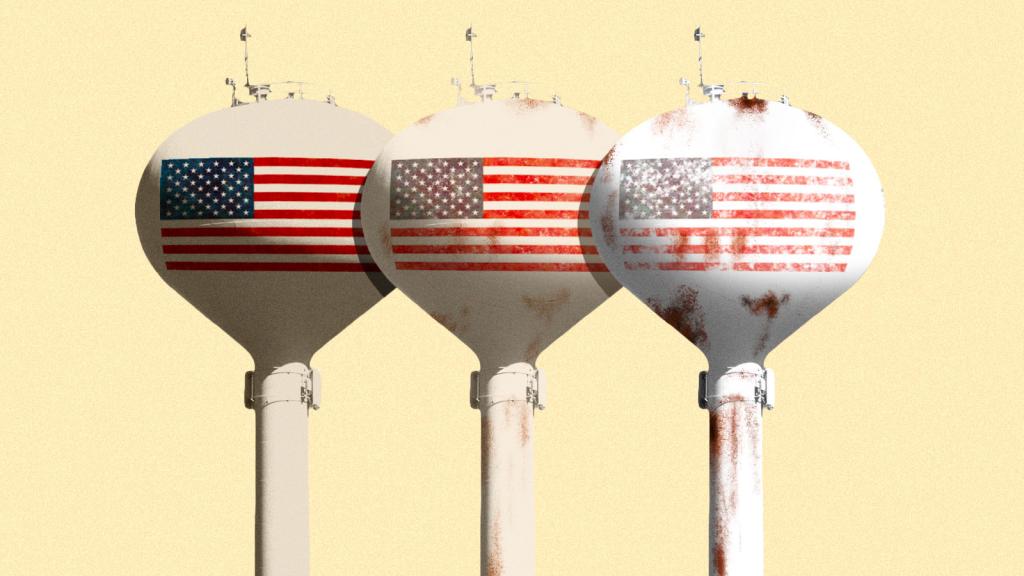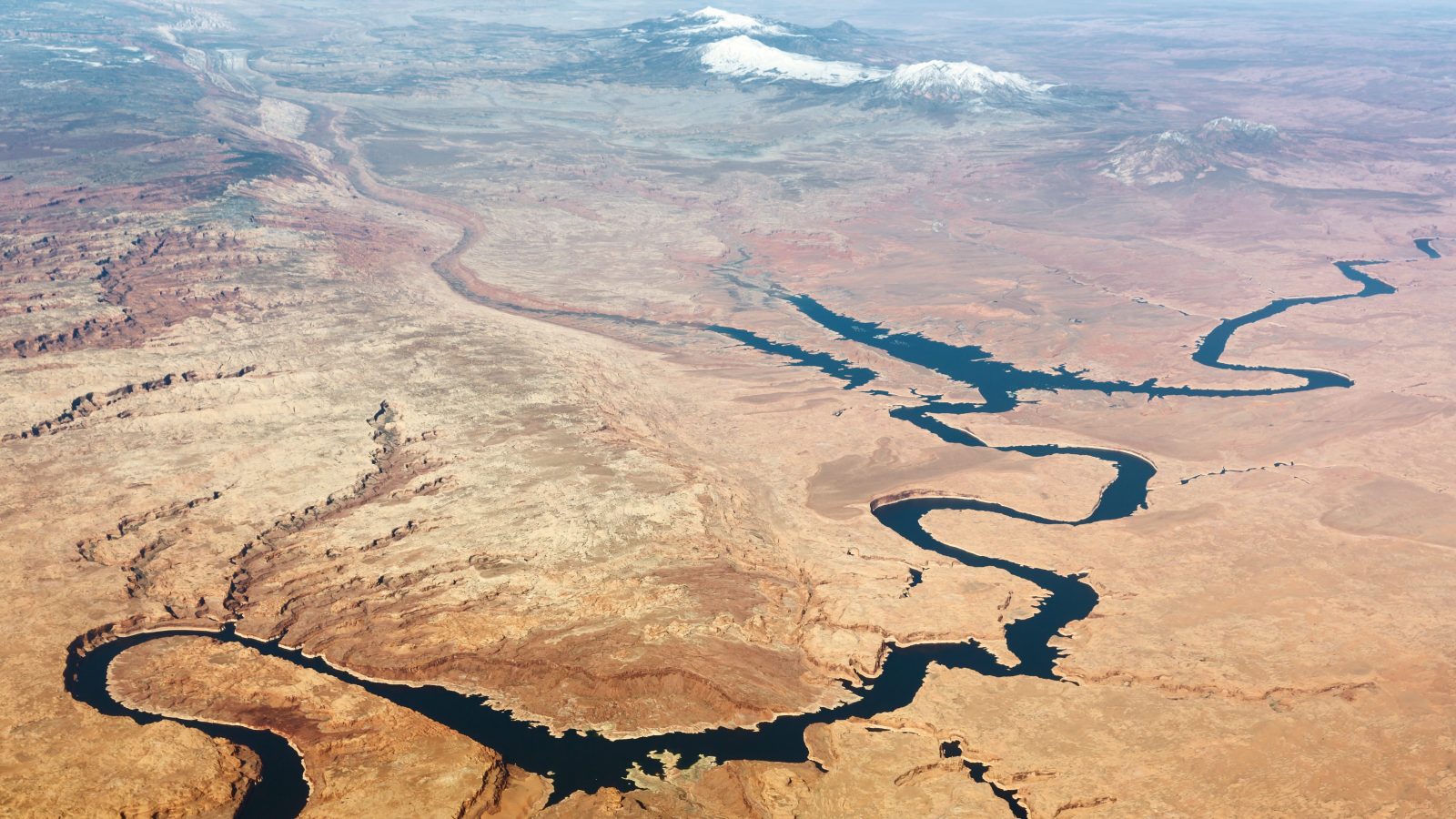When Bidtah Becker, a citizen of the Navajo Nation, was growing up in Albuquerque, New Mexico, clean water flowed from the taps at her house. She and her siblings often visited her grandmother and other relatives on the Navajo reservation a few hours away. There, clean water was scarce — water had to be hauled by truck up to the reservation in large metal containers. “We always knew that every time we went we were going to get diarrhea,” Becker, now an associate attorney for the Navajo Tribal Utility Authority, told Grist. “We were just kids, we didn’t know why. But now that I’m an adult, I totally know why that is.”
In 2021, access to running water and clean drinking water is a given for most Americans. The Census Bureau has even considered dropping a question on plumbing access from the U.S. census questionnaire. But many of the nation’s tribes still lack running water, access to clean water, and even flushing toilets. Native American households are 19 times more likely than white households to lack indoor plumbing, according to the U.S. Water Alliance, and more likely to lack piped water services than any other racial group.
That problem is at an inflection point for the Navajo Nation and 29 other tribes in the Colorado River Basin, which stretches from the Rocky Mountains to Mexico. A new analysis shows that Native Americans in the region are severely impacted by lack of water infrastructure and water supplies contaminated by arsenic and other harmful chemicals, a problem that has been laid bare by the COVID-19 pandemic. The report was published by the Water and Tribes Initiative, a consortium of tribes, nonprofits, and academics. It’s the first comprehensive analysis of water insecurity among all of the tribes in the Colorado River Basin, and it shows that, without federal intervention and billions of dollars of funding, water accessibility in the basin will continue to deteriorate.
Meanwhile, climate change and its effects threaten to complicate water access in the Western U.S. Each year since 2011 has exacerbated drought conditions that have caused water levels in the region to drop. In the coming years, experts say water supplies could reach terrifyingly low levels in the Colorado River Basin.
There’s already infighting among Western states over water rights and access, and drought threatens to exacerbate those tensions. The drought could worsen the existing water crisis for Western tribes — or it could present a window of opportunity for the federal government to ameliorate them.
“Tribes are very much at the forefront of responding to climate change, it’s disproportionately hitting tribal communities,” Heather Tanana, a Navajo public health expert and the lead author of the water infrastructure report, said, referring to the drought. “So it’s just this other layer they’re having to grapple with.”
The Colorado River Basin, a 246,000-square-mile area drained by the river and its tributaries, includes two reservoirs, Lake Mead and Lake Powell, that serve as watering troughs for much of the bone-dry West. Seven states and 30 federally-recognized tribes depend on the basin for drinking water, crop irrigation, even hydroelectric power. Arizona, California, Colorado, Nevada, New Mexico, Utah, and Wyoming have hashed out a complicated drought contingency plan that gets triggered when water levels are low and requires those states to reduce their reliance on the reservoirs and river by varying degrees.
This summer, that plan will likely be put to the test for the first time. Rising temperatures due to climate change are drying out soil in the basin and forcing layers of snow that accumulate in mountains, called snowpack, to melt unseasonably early. Usually, that snow melts into streams that flow into the Colorado River, bolstering water supplies. But the dry soil is acting like a massive sponge, soaking up precious water before it can reach streams. Lake Mead and Lake Powell, which store four years’ worth of water when they’re at capacity, are between 30 and 40 percent full.
“We’re having a challenging year,” John Berggren, a water policy analyst at the conservation group Western Resource Advocates, told Grist. “We’re potentially getting to a really scary place that we haven’t come close to with those reservoirs.” Barring a biblical rain event, water levels will continue to drop in coming years.
On paper, the 30 federally recognized tribes in the Colorado River Basin have access to 20 percent of the river’s annual flow. But in practice, tribes in the basin only have access to a tiny fraction of the river’s water, despite the federal government’s fiduciary responsibility to protect tribal treaty rights and resources. In order to turn paper rights into permanent wet water rights, tribes have to enter into a complicated legal process called a water settlement with the federal government, states, water districts, and private users. Such settlements take years; they’re expensive, complicated, and have to be authorized by Congress. “If the federal government were to do the settlements, they’d have to provide the infrastructure, provide the pipelines to actually move the water to the tribe,” Berggren said. “If they were to, overnight, sign settlements with all 30 tribes for all 20 percent of water, there’s concern that that would further ‘break the system,’ so to speak.”
The system, Becker said, is already fundamentally broken for tribes. “You just live a different lifestyle when you don’t have access to clean drinking water,” she said. She described the ongoing lack of access to flushing toilets and showers on the Navajo reservation, where one in three homes don’t have running water. People waiting in line at the nearby Safeway to use the toilet instead of their outhouses. And the trucks Navajo use to haul water to their homes from water access points in border towns multiple times per week. “In the summer, warm months, it’s not a big deal,” Becker said. “In the winter, snowpack, that sort of thing, all of this becomes so much more difficult.”
In order to solve this problem, the report recommends a “whole of government” approach. The federal government could establish an interagency working group dedicated to increasing water access among tribes. It could remove the red tape around the approval process for water infrastructure projects on reservations. And, most importantly, it can direct more funding to the issue.
But that only addresses one side of the problem. In addition to expanding water access for tribes, the West needs to change the way it thinks about water in general in order to adapt to climate change, Berggren said. The historic average flow in the Colorado River is around 14 million acre-feet of water. In the last few decades, it’s gone down to 13.5. It could dip down to 11 or even 10 million acre-feet in coming years. “That’s still a lot of water,” he said. “We can do a lot of great things with that if we’re smarter about it, we’re more efficient, we take a more holistic approach.” Western Resource Advocates, the organization Berggren works for, published a report that shows that encouraging municipal water conservation, recycling wastewater, improving irrigation efficiency on farms that draw from the river, and taking other similar measures could save the West millions of acre-feet of water — ensuring that there’s more water to go around.
The federal government is starting to take steps to protect the West’s water supply. On Thursday, the Senate passed the bipartisan Drinking Water and Wastewater Infrastructure Act of 2021 by a margin of 87 votes. It would direct $35 billion to states to update and repair their wastewater and drinking water infrastructure. If passed by the House and signed by the president, some 40 percent of that money would go to small, disadvantaged, rural, and tribal communities via states or direct loans from the federal government.
In her first month in office, Interior Secretary Deb Haaland, the first-ever Native American cabinet secretary and a member of the Laguna Pueblo tribe, one of the 30 tribes in the Colorado River Basin, announced the creation of a Drought Relief Working Group aimed at solving Western water issues without leaving tribes behind. “We are committed to using every resource available to our bureaus to ensure that Tribes, irrigators and the adjoining communities receive adequate assistance and support,” Haaland said in a statement.
More still needs to be done to close the water gap on reservations. The new report notes that the Navajo Nation alone needs $4.5 billion to address water issues on its reservation. Jennifer Pitt, Colorado River program manager at the conservation group the National Audubon Society, is hopeful that the drought could ultimately lead to a more inclusive water rights strategy in the Colorado River Basin. “My little look in the crystal ball says that drought and climate change are such a big disrupter of this system, that it is going to have to change,” she said. “And while we’re changing it, we actually have an opportunity to address some of what hasn’t been appropriately addressed in the past, and I fully expect that there is that opportunity for tribes.”
Becker, the Navajo associate attorney, is also optimistic that progress can be made. “I have never been this hopeful,” she said. “This issue can be solved, getting the political will behind it to solve it is what’s needed.”



